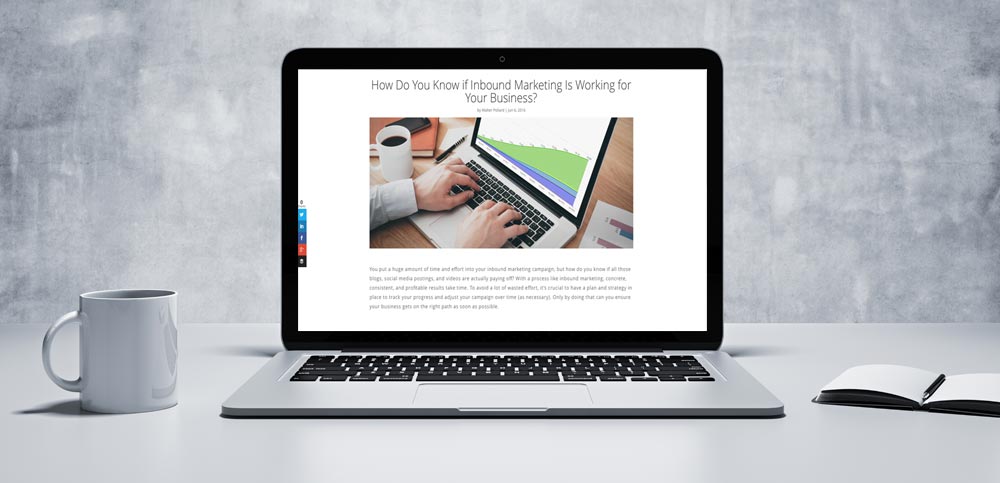
Video Marketing for Agencies: Huge Opportunity for Inbound Marketers
Video marketing can be a hugely beneficial aspect to any inbound marketing campaign. Agencies that harness this power in their clients’ marketing efforts are simply going to have an advantage, and in this competitive landscape, that advantage can be the difference between getting your clients more business and allowing your clients to stall. The more success you can help your clients garner, the more likely you are to continue receiving your retainer, meaning video marketing can be the powerful tool that fuels not only your clients’ success but yours as well.
How Video Marketing Can Bolster Any Inbound Marketing Campaign
Why Is Video Marketing So Powerful—Especially Today?
It’s no surprise that people are increasingly busy, and reading articles, blog posts, web copy, and other word-based content takes time. Video, on the other hand, allows you to build credibility and trust (arguably even more so than with written content), and it allows your consumer to get that information in a shorter amount of time.
Simply put, this means the potential customer is more likely to view video content than read written content, and that video content will ultimately be more impactful, engaging, and successful than written marketing material.
Also keep in mind that you want to vary your clients’ campaigns to tailor to different learning styles and engage as many people as possible. Since many people are visual learners, video is a great opportunity to get your point across both quickly and effectively.
Video truly builds powerful connections with your buyer personas because video content is relatable and easy to understand, and it yields that always-important engagement and personalized experience for your personas.
Video Marketing Is Easier Than Ever
While video production used to be complicated, time-consuming, and technical, advances in technology have increasingly made this video production easier and more accessible to more people. As an agency, you have a distinct opportunity to take advantage of these technologies and translate them into your clients’ inbound marketing strategies.
Again, the greater success you can help your clients reach, the more successful your agency will ultimately be, and incorporating video production into your inbound marketing strategies is one key way to produce those successful results.
How to Use Video Effectively in an Inbound Marketing Campaign
To maximize the utility of these videos, produce visual content and then use that content in a variety of ways. That is, when it makes sense, make sure to repurpose content within web pages, blogs, e-books, and more. This can be the whole video or just select parts of the video. In this way, video can be used effectively throughout the buyer’s journey.
This does not mean, however, that you should create one video and be done. Much like written content, multiple videos can be created with different parts of the buyer’s journey in mind (top, middle, and bottom of the sales funnel). For maximum efficiency, you want to ensure you’re getting the most out of each video produced by repurposing where appropriate.
Also like written content, videos still need to incorporate sound inbound marketing strategy. That means the following rules should be followed:
- Target videos to specific buyer personas.
- Address buyer persona objections and answer buyer persona questions within the content of the video.
- Add calls to action at the end of videos to funnel viewers to another video, blog, or landing page.
- Use videos to accomplish SEO goals and lead generation through social media accounts, blog posts, home pages, landing pages, and more.
Producing the Video Content: What Matters Most?
You might be thinking that your agency specializes in inbound marketing but not video production specifically. The good news, however, is that creating high-definition video is possible now with relatively inexpensive cameras and lighting systems.
Of all production elements, remember that lighting is the key. To be effective in an inbound marketing strategy, overall production value does not need to be of a professional caliber. Even a talking head with a static background can offer all those mentioned benefits as long as the lighting and sound quality are good and the content addresses legitimate buyer persona concerns and acts as genuinely educational material.
Tools to Improve Your Clients’ Video Production Value
- Wistia -This marketing tool offers tons of benefits. It includes calls to action within the videos; it integrates with HubSpot, allowing analytical tracking of your video data; it’s competitively priced; and videos can be securely stored on the Wistia site.
- Adobe Premiere Pro – This software is ideal for video postproduction, allowing you to fix lighting or contrast issues and skyrocket the video’s final production value. After learning its initial logistics, it’s also not overly complicated.
- B&H – This is one of many places (online or onsite) you can buy cost-effective video equipment.
A quick online search will also reveal a multitude of sources with tips and tricks for improving your video production skills. Many of these services and tutorials are free, but there are also pay services for more comprehensive educational material.
Video Production Benefits Every Aspect of Inbound Marketing
Like any good piece of content created within an inbound marketing strategy, a well-done video is effective for both marketing and sales. This is not a tool that should be created or utilized exclusively by one of those teams. Just as effective content can bridge the gap between marketing and sales and help those teams achieve shared goals, so too can video content.
In this way, sales should be involved and have input during the strategy that goes into video production as well as actual video creation. Nobody knows a potential customer’s objections better than a salesperson. Utilize that knowledge to create videos that are effective at every stage of the sales cycle and drive those leads seamlessly down the sales funnel to the next stage.
Video creation can understandably feel overwhelming if it’s not your agency’s area of expertise. There are, however, two important things to remember. One, you don’t need to hold your video to a professional standard for it to be effective within a client’s inbound marketing strategy. (It just needs to be well lit and audible.) Two, if you are truly uncomfortable or feel ill-equipped to create these videos, you can hire help—whether that means a video production company to actually make the videos or a video production consultant to get you up to speed and comfortable from a production standpoint.
A video marketing consultant will provide the following guidance:
- Video production and postproduction tips.
- Tools and assets to help you create better videos and integrate them effectively into your established inbound marketing campaign.
- Information about how to marry video and effective inbound strategies.
- Information about how video benefits marketing and sales (from a strategic standpoint).
- Identification of who within a company is best suited for different aspects of video production (who is comfortable being in front of the camera, creating the scripts, filming the videos, and so on).
Whatever assets your agency utilizes to create the best videos for your clients, if you acknowledge the power of video marketing, you are sure to give yourself a competitive edge against those agencies that strictly produce word-based content.
Receive a Free Video Assessment for Marketing and Sales





Recent Comments